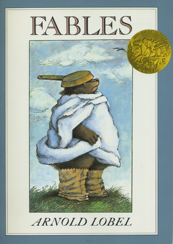Fable, it's story elements, and quality characteristics
Introduction
Fable is a short story. It usually has animals as characters with real life all age problems, setting is every time, and has a moral (lesson or theme about what is wise or right and wrong) as a theme. Most famous are Aesop's Fables.

Quality characteristics by story elements
Characterization
- Characters are usually animals, very few, animated, inanimate, personified or anthropomorphic (have human characteristics).
Setting
- Place is anywhere and everywhere.
- May be imaginary.
- Time is anytime or no time, but real times.
Plot
- Real life all age problems.
- Very simple, though interesting.
- Thought provoking to didactic.
Theme
- Wise message or idea implied or stated for societal or personal benefit.
Style
- Casual every day.
- Sometimes like a parent passing on wisdom to a daughter or son or wise person to a learner.
- Events are accurate, but not necessarily real life.
- Dialog, artifacts, feelings, are from the real world and described accurately.
Tone
- Reflection of human strengths, frailities, weaknesses, or imperfections.
- Reader is lead to new insights and/or understandings.
Point of View
- Often third person narrative. However, could be first.
Fable samples
Arnold Lobel's book Fables is a collection of twenty short, simply written modern day humorous, silly, entertaining fables that delights readers young and old. Each fable is on one page with a related illustration of the opposite page.


Home: Literacy, media, literature, children's literature, & language arts